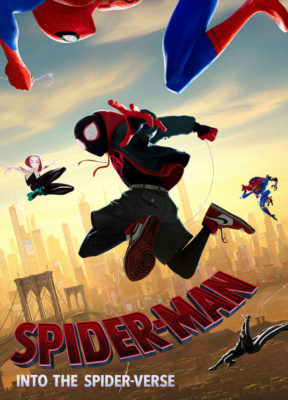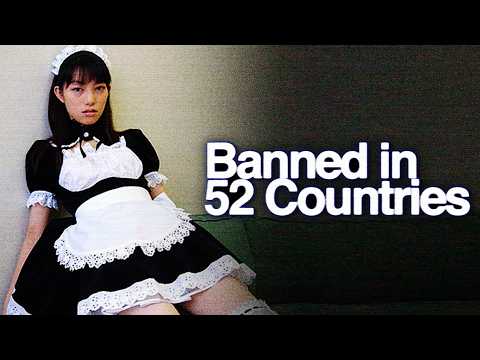
Snuff Film Shocking Truth Behind Its Infamous Legend
When you hear the term “snuff film,” it sends shivers down the spine. In theory, a snuff film is an illicit movie that captures real murders or extreme violence for the viewing pleasure of audiences. This concept has plagued our collective consciousness through sensational media reports and urban legends, making it a topic of intense debate. However, the truth surrounding snuff films is more nuanced than most people realize. They serve as a dark reflection of our society’s anxieties about media ethics, exploitation, and censorship. So, what’s the real story behind these controversial films? Let’s dive into the shocking truths hiding beneath the infamous legend of the snuff film.
What is a Snuff Film? Understanding the Controversy
Snuff films have become a shorthand way to discuss forbidden cinema, often characterized by their alleged depiction of real-life murder or extreme violence. The myth suggests they are commercial entities, possibly circulating through underground channels. Still, there’s little concrete evidence confirming their existence. A crucial aspect of understanding snuff films lies in parsing fact from fiction. Many of these stories stem from our fears about the limits of artistic expression and the potential consequences of morally ambiguous content.
The controversy surrounding snuff films acts as a barometer for the public’s perception of media influence. Viewers grapple with the discomfort that arises when fiction blurs into reality. Sadly, the discussions frequently pivot away from the deeper questions about the ethics of horror. Terms associated with snuff film culture have, unfortunately, become intertwined with broader genres like exploitation cinema, blurring the lines of moral inquiry. As creators grapple with these powerful topics, they must consider the narratives they’re portraying and the potential impact on audiences.
The debate continues to evolve, often fueled by films that push the boundaries of what’s acceptable. Directors frequently experiment with shock value, and while this can generate conversations, it can also open the floodgates for sensationalist narratives. Moviegoers are left wondering where to draw the line between entertainment and exploitation, especially when snuff films linger at the edge of our cultural understanding.

The Dark Origins: Snuff Films vs. Rido Movies
To truly grasp the infamous legend of snuff films, we must explore their historical context, especially their relationship with other controversial genres like rido movies. These films, often rooted in social realities, aim to expose the struggles faced by marginalized groups. Unlike snuff films, which are shrouded in scandal and myth, rido movies—such as “In the Land of Happy Tears”—candidly portray the darker aspects of life without glorifying violence.
Understanding the stark differences between snuff films and rido movies not only enriches the filmic landscape but also stimulates conversations about the societal issues that filmmakers hope to highlight. While snuff films tap into a perverse fascination with violence and demise, rido films invite audiences to witness painful truths. The emotional responses elicited by these different kinds of films could not be more different, with rido films aiming for empathy rather than morbid curiosity.
Chauncey Leopardi, a renowned cinematographer, has weighed in on the subject, emphasizing the narrative weight that strong visual storytelling carries. His insights remind us that rather than creating films designed solely to shock or terrify, artists can approach tough subjects with compassion and nuance. By placing rido movies alongside the sordid world of snuff films, we find a stark contrast that sheds light on larger societal issues, conditioning audience expectations and moral considerations in the process.
Snuff Film Myths: Debunking the Urban Legends
The world of snuff films is riddled with myths that warrant debunking. First up, let’s tackle the idea that snuff films are mainstream. This conception misleads audiences, suggesting that such horrific content is easily accessible in regular media outlets. Platforms like YouTube and Vimeo strictly enforce content guidelines that prohibit the circulation of real snuff films, reinforcing that most of these narratives exist in rumor and urban legend instead of active circulation.
Next, we have the misconception that snuff films are well-documented. While tales abound, factual evidence is scarce. Chauncey Leopardi pointed out that most claims hinge on hearsay and sensationalism rather than direct proof of existence. Very few authenticated instances have ever come to light. This lack of credible evidence fuels the cycle of myth-making, leading fans of horror and shock cinema to embrace the myth rather than the reality.
Finally, let’s discuss the so-called demand crisis for these films. This belief is misguided and largely inflated by sensationalist narratives. The chaos surrounding the release of “Mavis” from “Hotel Transylvania,” which uses dark humor to explore themes of fear, illustrates how narratives can ripple through public perception, affecting what audiences deem acceptable or taboo. Ultimately, the market for actual snuff films is far less lucrative than believed, maintaining their status as more fear and myth than actual entity.

Films that Tried to Capture the Shock Factor: The Tusk Movie Impact
Looking at films that have attempted to explore shock value, Kevin Smith’s “Tusk” serves as an interesting case study. Though it may not fit the snuff genre, this film dives deep into body horror, showcasing extreme scenarios that challenge viewers’ thresholds for disgust. In “Tusk,” a podcaster finds himself transformed into a walrus by a deranged recluse, raising questions about morality and the psychological ramifications of transformation.
Critical reception to “Tusk” showcases the different ways audiences process horror films. Many viewers left the theater unsettled yet intrigued, indicating an appetite for experiences that push conventional boundaries. The cultural fascination with the grotesque is mirrored in snuff film discussions, revealing how these narratives challenge our perceptions of horror—both as an experience and as a concept.
This interplay between shock factor and audience reception highlights anatomy at the heart of horror discussion. As filmmakers experiment with these ideas, they tap into our anxieties about violence, identity, and the human psyche. If “Tusk” is any indication, shock value can provoke deep psychological questions—even if a true snuff film continues to exist only in urban legend.
The Role of Pop Culture: Paw Patrol Live and the Contrast
In an ironic twist, the juxtaposition of wholesome entertainment like “Paw Patrol Live” with the sinister implications of snuff films highlights a cultural tension within our media consumption. The innocence and charm of children’s programming starkly contrast adult horror, illustrating the wide gulf between perceived safety and exploitation in cinema. Society wrestles with these conflicting narratives, confronting the challenges of what constitutes acceptable content.
Children’s programming like “Paw Patrol Live” reinforces our expectations of purity and positivity in entertainment. Meanwhile, the concept of snuff films brings audiences face-to-face with their darker fascinations. This duality creates a challenging dialogue about morality and audience expectations. It reflects a deeper societal conversation about the implications of violent content and its accessibility to impressionable audiences.
Ultimately, the differing reactions to children’s films versus horror help frame our understanding of societal norms. While snuff films linger on the fringes of our cultural consciousness, engaging with innocent entertainment pushes audiences to rant against violence and exploitation, prompting questions surrounding decency in film. With expectations drastically shifting between these genres, filmmakers must navigate these waters carefully.
Flixtor Movies and the Grey Area of Content Distribution
In recent years, platforms like Flixtor Movies have emerged, offering access to a broad selection of films, some of which may wade into ethical dilemmas. The increasing popularity of these platforms complicates the distribution landscape. Emerging filmmakers must be cautious to steer clear of faint lines between exploitation and genuine storytelling.
Content creators face the daunting task of ensuring their work is not misconstrued as part of the snuff film mythology. The blurred line between artistic expression and exploitation poses ethical issues that filmmakers must maneuver around carefully. The commercialization of horror fuels temptations to chase shock value without considering potential ramifications.
As the digital landscape continues to shift, artists will have to grapple with these challenges head-on. Navigating platforms like Flixtor Movies requires sensitivity to the impact of their content on public perception. With audiences becoming more aware of ethical considerations, independent filmmakers must balance creativity with accountability, especially when the lure of sensationalism looms large.
Final Thoughts: The Legacy of Snuff Films and Their Impact on Filmmaking
The legend of snuff films looms large, continuing to fuel intense debates about freedom of expression, moral standards in storytelling, and viewer accountability. While they mostly reside in the realm of myth, their cultural resonance is significant. In our rapidly changing digital landscape, filmmakers must find a balance between the allure of shock value and ethical storytelling that speaks to public responsibility.
As we observe the rise of independent filmmaking, it becomes crucial to reflect on our collective fascination with horror. Films like Mavis from “Hotel Transylvania” provide a lens through which we can analyze our anxieties surrounding violence, voyeurism, and the thin line separating fact from fiction. Understanding the truth behind snuff film legends offers not only insights into media ethics but also shapes the future of storytelling in cinema.
In a world where the shocking often captures our attention, it’s essential for filmmakers to tread thoughtfully. From the urban legends of snuff films to the complex realities of work like “Tusk,” the artistic processing of horror reveals deeper societal fears. Engaging with these narratives can ultimately invite viewers to confront their understanding of morality, storytelling, and consequence in the ever-evolving landscape of cinema.
The Snuff Film: Shocking Truth Behind Its Infamous Legend
The Origins and Myths of Snuff Films
The term “snuff film” can send a shiver down anyone’s spine. While many believe these films depict actual murders for the sake of entertainment, the truth is far less concrete. The concept gained traction in the 1970s, fueled by urban legends and fictional portrayals. For example, Jim Caviezel’s film “The Passion of the Christ” showcased the gruesome nature of violence in cinema, albeit in a theatrical context. Interestingly, the only known “snuff film” that surfaced turned out to be a hoax, proving that the genre thrives more on myth than on reality. Speaking of legends, did you hear about the latest buzz around Taylor Swift and Travis Kelce? Their whirlwind romance has taken headlines by storm, drawing attention in unexpected ways.
The Modern-Day Exploitation of Violence
In today’s media landscape, whether it’s the case of a film like Garbonzo or brutal reality shows, the line between fiction and reality has blurred dangerously. This makes the fascination with snuff films even more perplexing. Critics argue that sensational elements in entertainment, like the intense portrayal of characters such as Omni Man, blur the moral lines, desensitizing audiences to violence. This focus on realistic violence has sparked debates about ethics and media responsibility, especially when considering what defines acceptable content for viewers. With this in mind, the audience must ponder whether they would draw a line at genres such as horror or reality TV.
Pop Culture’s Reflection on Snuff
Pop culture frequently references the notion of snuff films, departing from chilling reality into thrilling narratives. Consider how a character like Princess Rhaenyra targaryen navigates the violent struggle for power in “House of the Dragon. Here, violence is portrayed dramatically, yet tastefully, providing a stark contrast to the concept of actual snuff. Another interesting tidbit? The gallon water bottle phenomenon at gyms shows how far society has come in terms of media influence and culture, including the demand for endurance narratives. As filmmakers explore these darker themes, their connection to reality requires a discerning viewer. Engaging with films and elements such as those in the cast Of Here 2025 film showcases the evolution of storytelling in grappling with themes of morality and humanity.
In the end, while snuff films may exist as a dark urban legend, the narratives surrounding them are rich with lessons about society’s complex relationship with violence and entertainment. And who knows? Maybe one day we’ll see in-depth conversations about the impact of such films, just as we do regarding trends like Ftv Girls or viral celebrity news.













